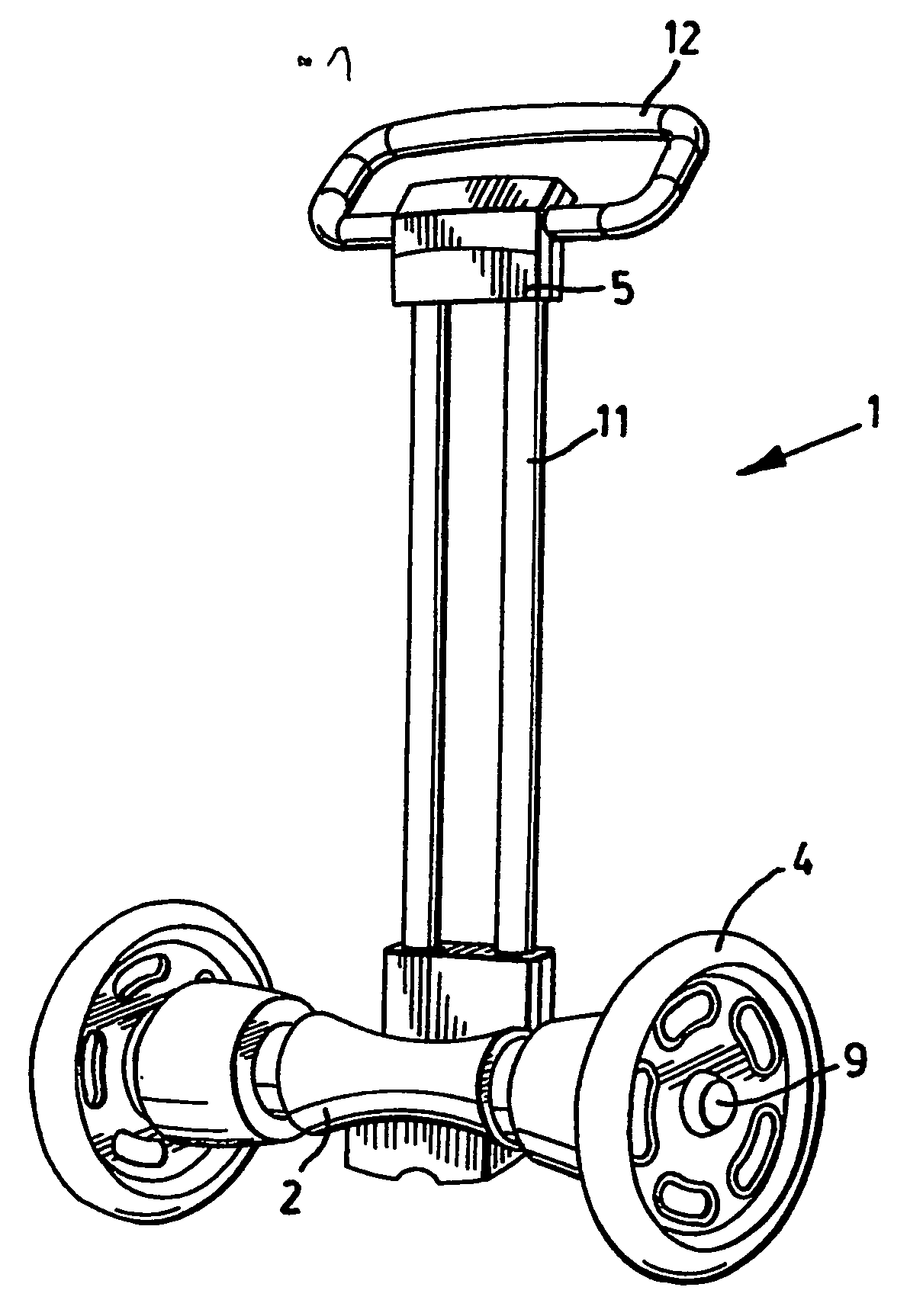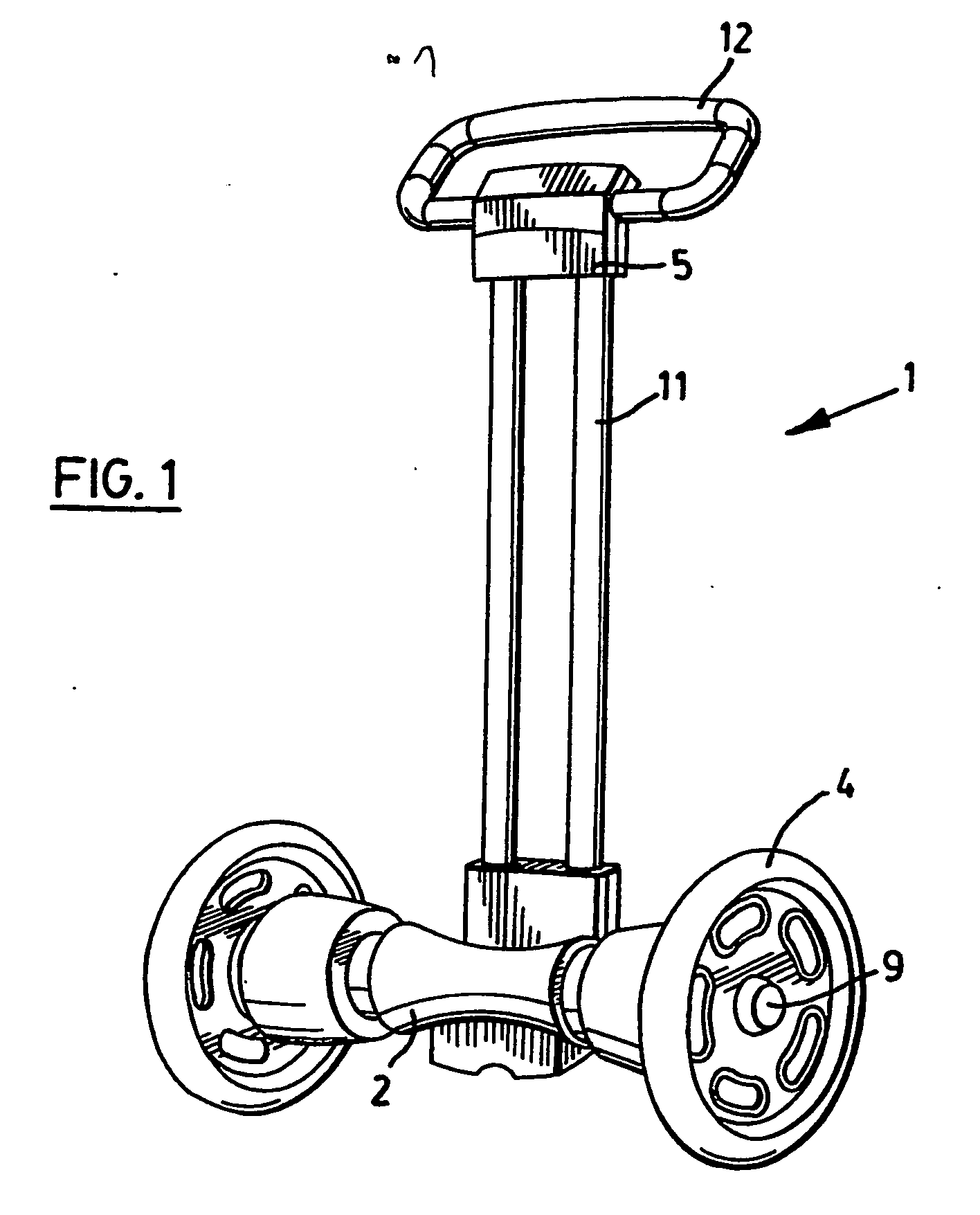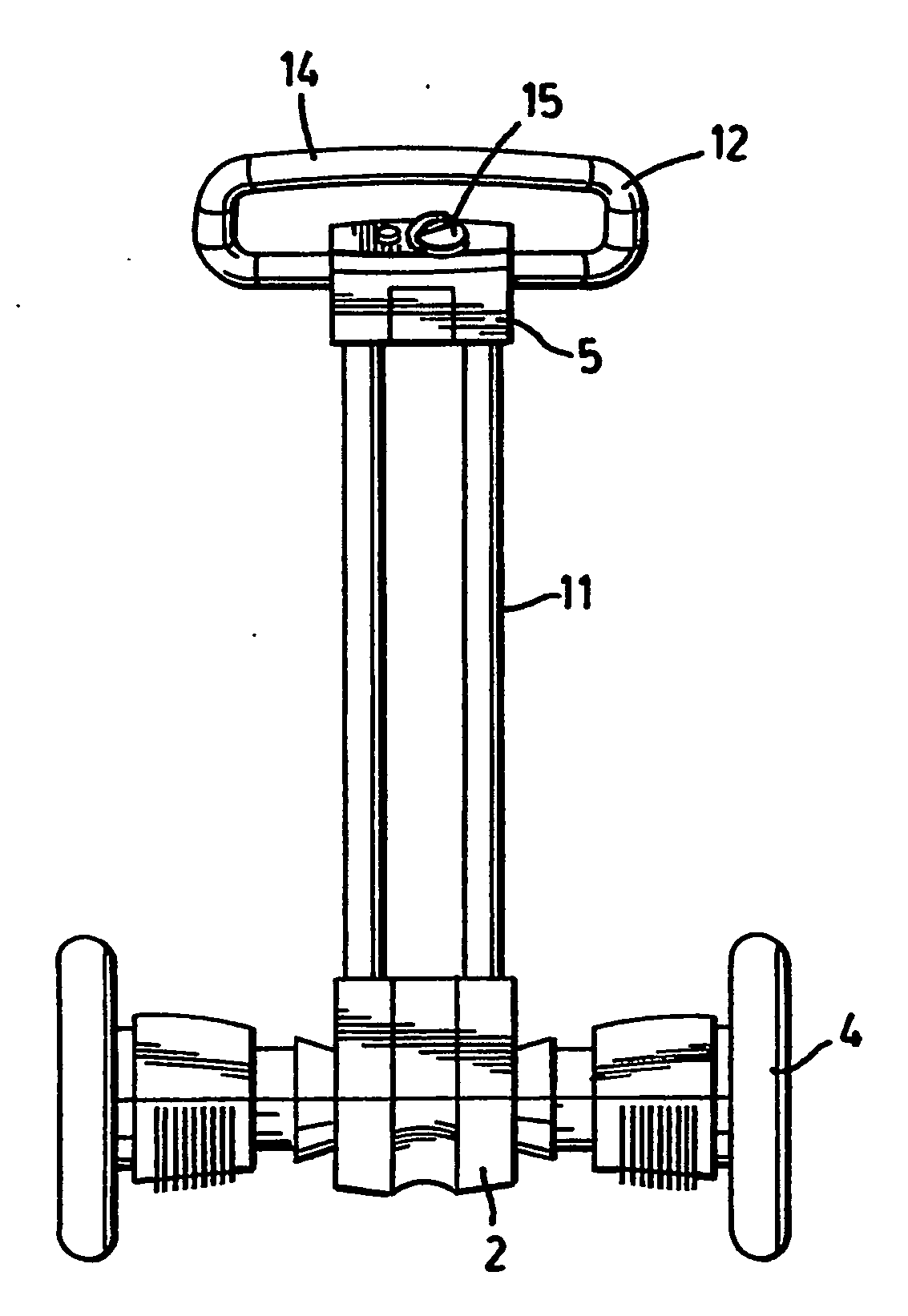Motorized towing device
a towing device and motor technology, applied in the field of motorized towing devices, can solve the problems of being particularly adapted and designed for a single specific use, unable to meet the needs of elderly people walking home with a significant volume of groceries, and unable to provide assistance to elderly people walking home with groceries. , to achieve the effect of convenient movement of large volumes and quick and easy attachment of the devi
- Summary
- Abstract
- Description
- Claims
- Application Information
AI Technical Summary
Benefits of technology
Problems solved by technology
Method used
Image
Examples
Embodiment Construction
[0025] The present invention may be embodied in a number of different forms. However, the specification and drawings that follow describe and disclose only some of the specific forms of the invention and are not intended to limit the scope of the invention as defined in the claims that follow herein.
[0026] A motorized towing device constructed in accordance with a preferred embodiment of the present invention is shown in the attached drawings and noted by reference numeral 1. Device 1 is comprised, in general, of a chassis 2, at least one motor 3, at least two wheels 4, a controller 5 and a quick release attachment mechanism 6 to releaseably secure the device to an object to be towed or moved. While it will be appreciated from a full understanding of the invention that chassis 2 make take any one of a wide variety of different physical configurations, in the embodiment shown the chassis is generally cylindrical in configuration and would typically be formed from an outer housing 7 ...
PUM
 Login to View More
Login to View More Abstract
Description
Claims
Application Information
 Login to View More
Login to View More - R&D
- Intellectual Property
- Life Sciences
- Materials
- Tech Scout
- Unparalleled Data Quality
- Higher Quality Content
- 60% Fewer Hallucinations
Browse by: Latest US Patents, China's latest patents, Technical Efficacy Thesaurus, Application Domain, Technology Topic, Popular Technical Reports.
© 2025 PatSnap. All rights reserved.Legal|Privacy policy|Modern Slavery Act Transparency Statement|Sitemap|About US| Contact US: help@patsnap.com



